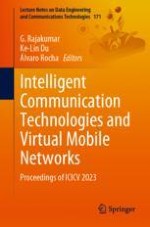The book is a collection of high-quality research papers presented at Intelligent Communication Technologies and Virtual Mobile Networks (ICICV 2023), held at Francis Xavier Engineering College, Tirunelveli, Tamil Nadu, India, during February 16–17, 2023. The book shares knowledge and results in theory, methodology, and applications of communication technology and mobile networks. The book covers innovative and cutting-edge work of researchers, developers, and practitioners from academia and industry working in the area of computer networks, network protocols and wireless networks, data communication technologies, and network security.
